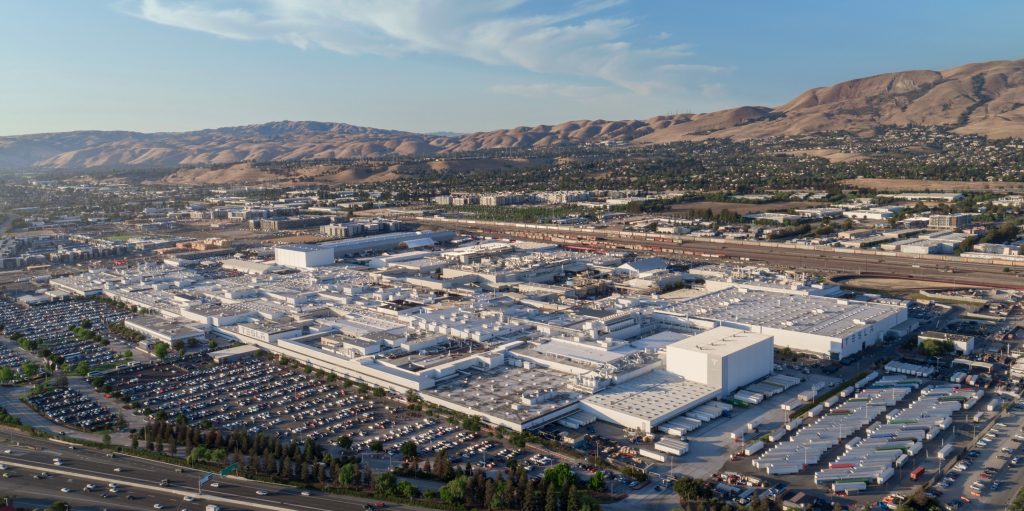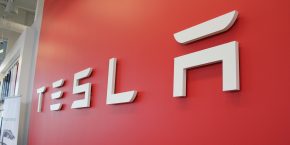
Tesla released a new blog post defending its impact on California and says it now employs 47,000 people in the state.
California has been critical to Tesla’s success over the last 20 years. The state has helped Tesla in its time of need, and its strong climate initiatives and EV incentives have made it the biggest market for electric vehicles in the US and, therefore, Tesla’s biggest market.
However, the love story between Tesla and California ended somewhat abruptly in 2020. Early measures to curb the spread of COVID-19 resulted in Tesla closing its Fremont factory, which angered CEO Elon Musk to the point of threatening to move Tesla from California.
By 2021, Tesla delivered on the threat and moved its headquarters to Texas.
The automaker always maintained that it is still heavily investing in California and even had to walk back Musk’s threat to move the Fremont factory out of the state.

But the behavior of Musk over the last year resulted in Tesla’s popularity in what is still its most important US market plummeting.
Since Tesla’s move to Texas, the CEO has made it clear that he is now Republican and even encouraged people to vote Republican during the last election – which is rare for a tech CEO to officially take a side like that.
This didn’t help Tesla’s case in blue states like California. On top of that, Musk called the Democratic Party “the party of hate” and regularly makes negative comments on the left on his popular Twitter page.
In an apparent damage control effort, Tesla released a rare blog post defending its impact on the state of California.
In the post, the company listed all its primary operations in the state:
Tesla’s footprint in California is made up of Megapack production and vehicle castings in Lathrop, hardware and software engineering in Palo Alto, vehicle and battery manufacturing in Fremont, battery development and testing in San Diego and vehicle design in Hawthorne.
Tesla listed some of its economic impacts in the state of California based on IHS research:
- Tesla-supported California jobs (direct and indirect) exceeded 80,000 in 2021. Over 43,000 of these stemmed from $1.6 billion in expenditures with California suppliers.
- For every 100 direct Tesla jobs, 50 more were supported in the supply chain and 68 by follow-on consumer activity.
- From 2018 to 2021, Tesla paid an average of $1 billion in federal, state and local taxes annually, with approximately $400 million going toward state and local taxes in 2021.
- Tesla’s average contribution to the gross state product (GSP) rose by 42% between 2018-2021, while the state’s GSP grew by 16%.
- Wages from Tesla and Tesla-connected jobs resulted in $16.6 billion in economic activity, or $44.4 million injected into California’s economy each day.
Tesla confirmed that it now has 47,000 employees in California:
In 2022, we grew to 47,000 employees (direct employment) in California, and our production footprint continued to increase as our 2 millionth vehicle rolled off the lines in Fremont. Since 2016, we have made over $5 billion in capital investments in our facilities. We are confident that these trends will continue and that 2023 will be an even bigger year for Tesla in California.
That’s just a little less than half its global workforce still located in California.
Electrek’s Take
Top comment by PeterK
I run an annual fundraising raffle for a climate nonprofit, Climate XChange. For 6 years we raffled Teslas. This year sales are very slow - many people who bought tickets in the past told us they no longer want to win a Tesla. So we added the Rivian R1T pickup and R1S SUV as prize options, and sales are now slowly picking up. But we have a long way to go to our usual sellout by the late February drawing.
Despite Tesla not having an official PR department anymore, I’ve seen an effort lately for the automaker to have more of its own communications directly with the public and not just through Elon Musk’s Twitter.
Since dissolving Tesla’s PR department, Musk made it so everything goes through him, and that has become a problem lately as he increasingly antagonizes part of the population in the US.
When you lead a company that sells products and services to consumers, it’s just bad business to become publicly political, like Musk has been doing over the last year.
It looks like Tesla is trying to have its own voice again by being more active on social media and, now, some blog posts like this recent one.
FTC: We use income earning auto affiliate links. More.



Comments